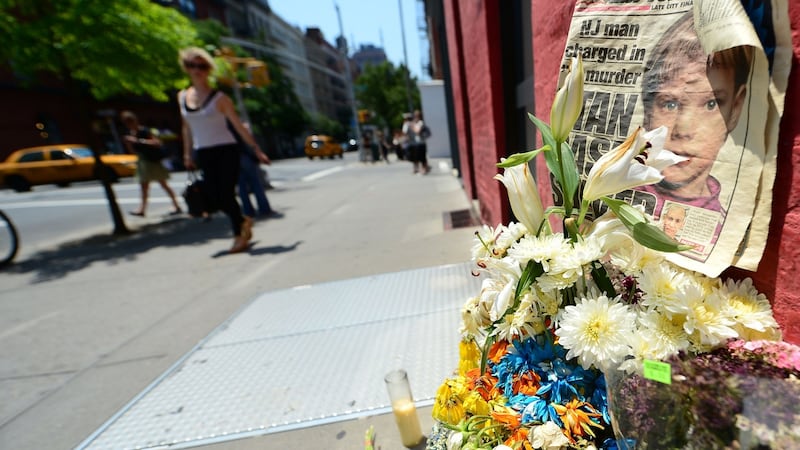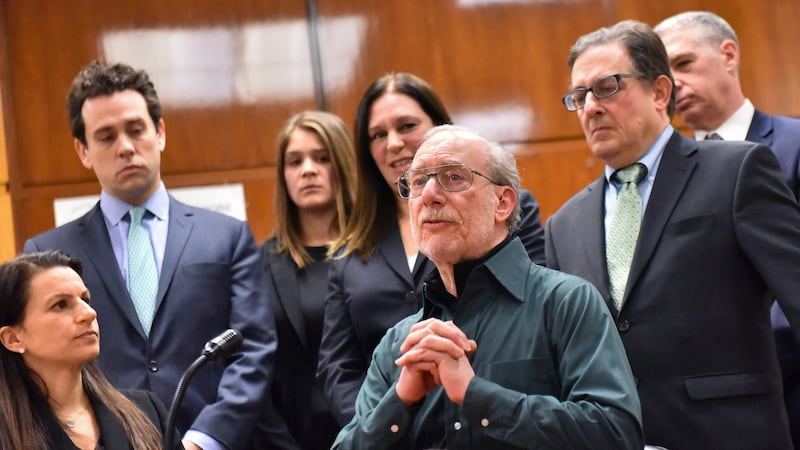Pedro Hernandez, a former bodega stock clerk who confessed to luring six-year-old Etan Patz into a New York basement and attacking him, has been found guilty of murder and kidnapping, a long-awaited step toward closure in a case that bedevilled investigators for decades and changed forever the way parents watched over their children.
A Manhattan jury convicted Hernandez on the ninth day of deliberations after the second of two lengthy trials that brought renewed attention to Etan's disappearance on May 25th, 1979, as he walked to his school bus stop alone in SoHo for the first time.
The mystery of what happened to Etan shook New York and the US, with photographs of the smiling, sandy-haired boy ubiquitous on milk cartons, “missing” posters, newspaper front pages and television newscasts. The alarm caused by the abduction reverberated across America, evoking the worst fears of parents and helping to change the way authorities tracked missing children.


The vote to convict came after jurors returned to court on Tuesday following a three-day weekend and watched – “for the 100th time,” one juror said – Hernandez’s recorded confessions. Around noon, the panel sent a note to the judge saying it had reached a verdict.
Years of fruitless searches and examinations of suspects had failed to yield answers for Etan's parents, Stanley and Julie Patz, who still live in the Prince Street loft that was their home when their son vanished from what was then a semi-industrial area.
Authorities turned their attention to Hernandez, who lived in a small New Jersey town near Philadelphia, after his brother-in-law called detectives in 2012 to share his suspicion that he could be responsible. For Stanley Patz, the verdict meant a vigil of almost 38 years was close to an end.
“The Patz family has waited a long time, but we finally found some measure of justice for our wonderful little boy Etan,” said Patz, who sat through every day of the trial, carrying his own cushion to use on the courtroom’s hard wooden benches. He said that he had called his wife, who was not at the courthouse, and that she had cried at the news.
“I’m really grateful – I’m really grateful – this jury finally came back with what I’ve known for a long time,” he added, “that this man, Pedro Hernandez, is guilty of doing something really terrible so many years ago.”
Mistrial
The outcome was a victory for the Manhattan district attorney, Cyrus R Vance Jr, who chose to prosecute Hernandez a second time after the earlier mistrial. That proceeding ended in 2015 after 18 days of deliberations when a lone juror declined to convict. He said he had been persuaded by defence arguments that Hernandez had mental health problems that called his admissions into question and that another suspect could have been the killer.
Hernandez (56) is scheduled to be sentenced February 28th. He faces up to 25 years to life in prison on both the kidnapping and murder charges, prosecutors said. Etan’s remains were never found, and prosecutors had no scientific evidence from crime scenes to corroborate their arguments.
But the prosecution team, led by two veteran assistant district attorneys, Joan Illuzzi and Joel J Seidemann, relied on Hernandez's own words to build their case, pulling from the detailed confessions he gave to authorities around the time of his arrest and to mental health experts who evaluated him later.
In interviews recorded on video, which prosecutors played repeatedly for jurors during the five-month trial, Hernandez described encountering a boy on a sidewalk outside the bodega and asking him if he wanted a soda. Hernandez told investigators he had led the boy to the basement and started to choke him. He said he had put the boy into a plastic bag and put the bag into a box that he left with garbage nearby. He said he believed the child was still alive when he left him.
As part of his confession, he also signed a “missing” poster showing Etan, confirming to investigators that he was the boy he had attacked. “I just couldn’t let go,” Hernandez said in one of the interviews. “I felt like something just took over me.” He did not offer a motive and said that he had not sexually abused Etan or any other child. But in her closing arguments, Illuzzi argued otherwise, saying that sexual abuse was the probable reason for the attack.
Confessions
Hernandez’s lawyers tried to undermine the credibility of his confessions, saying he was the only witness against himself and an unreliable one at that. They described Hernandez as having a low IQ and a personality disorder that made it difficult for him to distinguish between reality and fantasy. The defence contended that Hernandez’s admissions reflected a fiction he had concocted. They also argued that he was susceptible to pressure by detectives during an interrogation that lasted several hours.
Hernandez, who stared forward blankly through much of the trial, showed little emotion as the verdict was announced. “We are obviously terribly disappointed,” Harvey Fishbein, the lead defence lawyer, said outside court. He said he planned to appeal.
Prosecutors sought to portray Hernandez as mercurial and controlling yet deeply religious and desperate to unburden himself of the guilt he felt for attacking Etan. To support that argument, the prosecution called witnesses who testified about admissions Hernandez made over the years, with varying details, about killing a child in New York City.
A member of a church group testified that Hernandez fell to his knees in tears, saying he had attacked a child. Hernandez’s former wife, with whom he has had an acrimonious relationship, recalled how he had pulled her aside before they married and told her he had killed a “muchacho”, which she inferred to be a teenage boy.
She also testified that, after they were married, she found an image of Etan, taken from one of the missing posters, in a box of his in a closet.
The first prosecution witness to testify when the trial began in October was Julie Patz. She recounted a hectic morning and what turned out to be her final moments with her son. It was the Friday before the Memorial Day weekend; she was busy tending to her other children, and Etan jolted out of bed. He had been pushing to be more independent, she said, and he pleaded with her to let him walk about two blocks to the bus stop on his own.
She said that she had reluctantly agreed and had walked him outside. He set off wearing an Eastern Airlines cap and carrying a $1 bill given to him by a neighbourhood handyman on a visit to his workshop. He planned to stop in the bodega for a soda along the way.
That afternoon, when Etan did not return, Patz testified, she called around and learned that he had never made it to school or boarded his bus.
Other suspect
At the time, Hernandez was an 18-year-old high school dropout who had recently come to New York from Camden, New Jersey. Prosecutors said that soon after Etan disappeared, possibly within days, Hernandez returned to New Jersey, at some point taking a job at a dress factory.
His lawyers depicted Hernandez as struggling with a mental illness that loosened his grip on reality. They said he had schizotypal personality disorder, a condition marked by symptoms that included severe paranoia, social anxiety and unusual beliefs. His youngest daughter, Becky, testified that he had discussed having hallucinations of demons and an angelic woman in white.
The defence also suggested that another man could have been the culprit. The man, Jose Ramos, a convicted paedophile, had a relationship with a woman who had been hired to walk Etan home from school. He was considered a suspect for years.
Prosecutors, citing a lack of evidence, dismissed the suggestion that Ramos was involved. They also said Hernandez was feigning symptoms of his mental illness. At the start of deliberations, the jury was “majorly divided”, one juror, Cateryn Kiernan, said.
The confessions and the testimony about Ramos were among the major points of discussion. “We all had different hang-ups,” Kiernan told reporters. “It’s not a black-and-white case. There’s a lot of gray.”
Ultimately, the jurors agreed with the prosecution’s arguments discrediting Ramos as a potential suspect, and found that the defence had not raised enough doubt. Another juror, Mike Castellon, called the defence strategy “spaghetti on the wall” – tossing out numerous theories, none of which stuck for him.
Castellon said he found Hernandez’s confessions credible, and although he believed Hernandez might have a personality disorder, none of the experts who testified convinced him that it could make him confess to something he had invented. “That didn’t make him delusional,” Castellon said of the disorder. “We think he could tell right from wrong,” he said. “He could tell fantasy from reality.”
New York Times
















